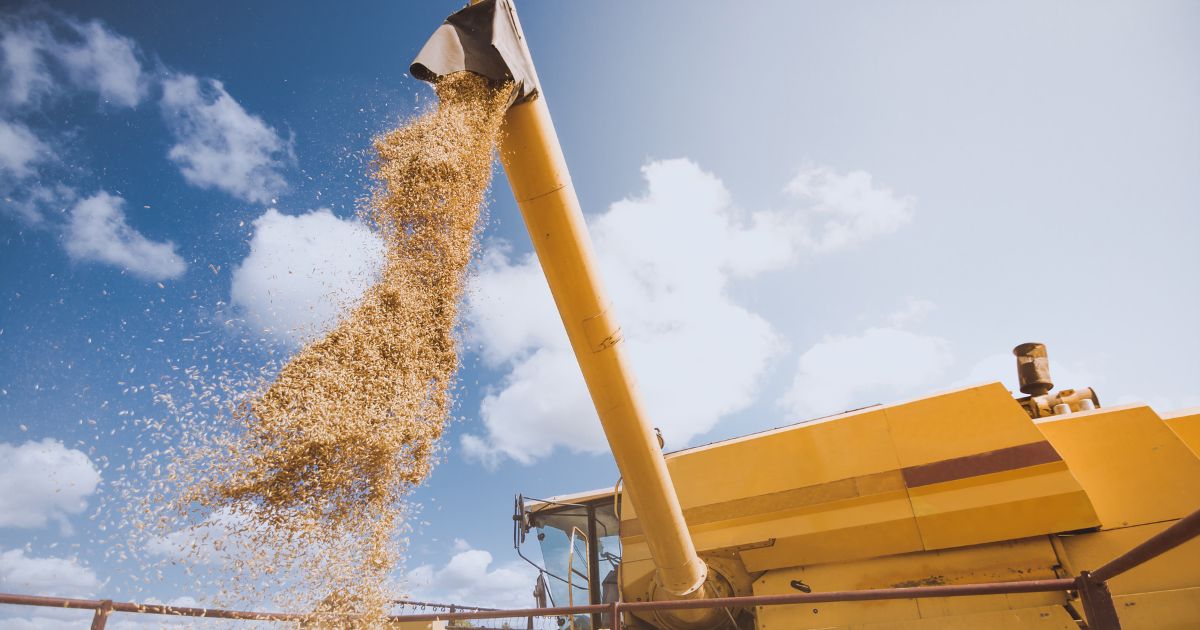The Evolution of Grain Processing
November 01, 2023

Grain processing encompasses the methods and techniques used to convert raw grains such as wheat, rice, corn, and barley into edible products ready for consumption. This involves a series of steps including cleaning, hulling, milling, and refining to produce various food staples like flour, meal, and cereal. The objective is to remove impurities and inedible parts and contribute to the size reduction of the grain to a usable form, and often enhance its shelf life. The outcome of grain processing is crucial for the quality and nutritional value of the final food products that end up on our tables, ranging from bread and pasta to porridge and snack foods.
Processing Grain in the Early 1900’s

Processing grain in the early 1900s was a labor-intensive and time-consuming process, significantly different from the highly mechanized operations of today. The Industrial Revolution had begun to change the landscape of agriculture, but many processes still relied on manual labor and animal power. In the rural heartlands, farmers would . Threshing was often done by beating the grain using flails or by having horses or oxen tread over sheaves spread out on the threshing floor, separating the grain from the chaff.
The unprocessed grains were then transported to gristmills, where they were ground into flour or meal. These mills were typically powered by water or wind, with large, stone grinding wheels crushing the grains to produce different grades of flour. The milling process was not as refined as today, often resulting in coarser flours that retained more of the bran and germ. This period saw the beginning of the shift towards more automated processes, with innovations like the roller mill improving efficiency and consistency. Despite these advances, grain processing remained a community-centered activity that required significant human oversight and skill, reflecting an era before the full automation and scale of modern grain processing.
Breakthroughs in Grain Processing
The 20th century fundamentally transformed the agricultural industry, leading to innovative solutions in process efficiency, output, and quality. The introduction of the roller mill was one of the most significant advancements. Unlike traditional stone mills, roller mills could operate continuously and grind grains more uniformly. This innovation allowed for finer flours and a separation process that could isolate high-quality endosperm, leading to the production of whiter, more refined flour that became a staple in households.
Another major development was the mechanization of harvesting and threshing techniques. The combine harvester, a remarkable innovation of the era, consolidated the processes of reaping, threshing, and winnowing into a single operation, which drastically reduced labor costs and time. This machine could harvest vast fields in a fraction of the time it took by hand, profoundly impacting grain production scales. Advances in preservation and packaging also meant that processed grain products could be stored and transported over greater distances without spoilage, expanding their availability and consumption globally. These breakthroughs, among others, set the stage for the modern grain processing industry, enabling it to meet the demands of a rapidly growing population.
Why Do Food Manufacturers Process Grains?
Manufacturers process grains for several reasons:
Enhancing Edibility and Digestibility: Raw grains are often hard and not easily consumed. Processing such as milling or cooking alters the physical state of the grain, making it easier to eat and digest.
Improving Taste and Texture: Processed grains are usually more palatable. Techniques like roasting can bring out flavors, while removing the bran and germ in milling can produce finer, softer flour for baking.
Increasing Shelf Life: Whole grains contain oils in the germ that can go rancid. Processing grains by removing the germ and bran extends their shelf life, making them more suitable for long-term storage and distribution.
Enhancing Nutritional Value: Some processing methods, like fortification, enrich grains with vitamins and minerals, compensating for nutrients lost during processing or adding additional nutrients to meet health guidelines.
Convenience: Processed grains can be turned into ready-to-eat or easy-to-prepare products, fitting into the fast-paced lifestyle of modern consumers who may have less time for cooking from scratch.
Economic Reasons: Processing can increase the commercial value of grain products. By diversifying the types of goods they can sell, from whole grains to flours to breakfast cereals, manufacturers can cater to a wider market and increase profits.
Human Health and Personal Care: Processing grains can remove contaminants, reduce anti-nutrients that may interfere with digestion and nutrient absorption, eliminate pathogens, and protect against cardiovascular disease, thus ensuring the safety of the grain for consumption. Additionally, health conscious consumers are increasing their demand for soluble dietary fiber.
The Leading Manufacturer in Grain Processing
- Archer Daniels Midland (ADM)
- Cargill
- Bunge North America
- General Mills
- The Scoular Company
- The Andersons, Inc.
- Perdue AgriBusiness
- Grain Processing Corporation
Corn-Based Products Which Require Grain Processing
Corn, being one of the most versatile crops, can be processed into a wide array of products. Here are some corn-based products that require grain processing:
Cornmeal: Ground from dried corn, cornmeal is a staple for baking and is used for making bread, muffins, and as a coating for fried foods.
Cornstarch: Extracted from the endosperm of the corn kernel, cornstarch is a fine powder that’s commonly used as a thickening agent in cooking and baking.
Corn Syrup: A sweetener made from the starch of maize, corn syrup and corn syrup solids are used in foods to soften texture, add volume, prevent crystallization of sugar, and enhance flavor.
High-Fructose Corn Syrup (HFCS): Processed from cornstarch, HFCS is used in many foods and beverages as a sweetener and preservative.
Corn Oil: Extracted from the germ of the corn kernel, corn oil is used in cooking and is a key ingredient in margarine and other processed foods.
Ethanol (Ethyl alcohol): Produced by fermenting the sugars in corn, ethanol is used as a biofuel and is also blended with gasoline to increase octane levels and improve emissions. Additionally, ethyl alcohol is used for starches in paper, textile, corrugated box, and wallboard industries.
Polenta: This is a dish made from boiled cornmeal. While it is simple, the corn requires processing to become the meal used for polenta.
Grits: Particularly popular in the Southern United States, grits are made from ground, dried hominy or corn kernels.
Corn Flour: Finely ground cornmeal, corn flour is used in baking and as a breading for fried foods.
Corn Flakes: These breakfast cereals are made by toasting flakes of corn. The corn goes through a roller process to create the flakes.
Corn-based Plastics: Polylactic acid (PLA) plastics are made from fermented plant starch (usually from corn), and are used to create biodegradable materials.
Animal Feed: Corn is also processed into feed for livestock, poultry, and fish.
Manufacturers develop products with corn to showcase its extensive use in various industries, demonstrating its importance beyond just a food source.
The Top Worldwide Marketer in Grain Processing
As of my last update in April 2023, Archer Daniels Midland Company (ADM) was one of the top worldwide marketers and processors in the grain industry. ADM operates on a global scale, with a vast network of processing and transportation facilities which allows them to efficiently market their extensive portfolio of products derived from grains and oilseeds.
They are known for a wide range of services and products, including:
- Processing corn, wheat, cocoa, and other agricultural commodities.
- Manufacturing products for food and beverage, animal feed, industrial, and fuel applications.
- Providing agricultural storage and transportation services.
Conclusion
The evolution of grain processing stands as a testament to human ingenuity and the relentless pursuit of efficiency and sustainability in food production. From the rudimentary grinding stones of ancient times to the high-tech milling and bioprocessing facilities of today, the journey of grain processing mirrors the advancement of civilization itself.
Innovations in this field have not only multiplied the uses of grains beyond basic sustenance but have also enabled us to meet the demands of a growing global population. The future of grain processing promises even further refinement and innovation, potentially harnessing cutting-edge technologies like artificial intelligence and biotechnology to create more nutritious, accessible, and environmentally friendly grain-based products.
As we continue to evolve and innovate, the grain processing industry is poised to remain at the heart of global food security and nutritional needs, reflecting our enduring relationship with the earth’s precious resources.




